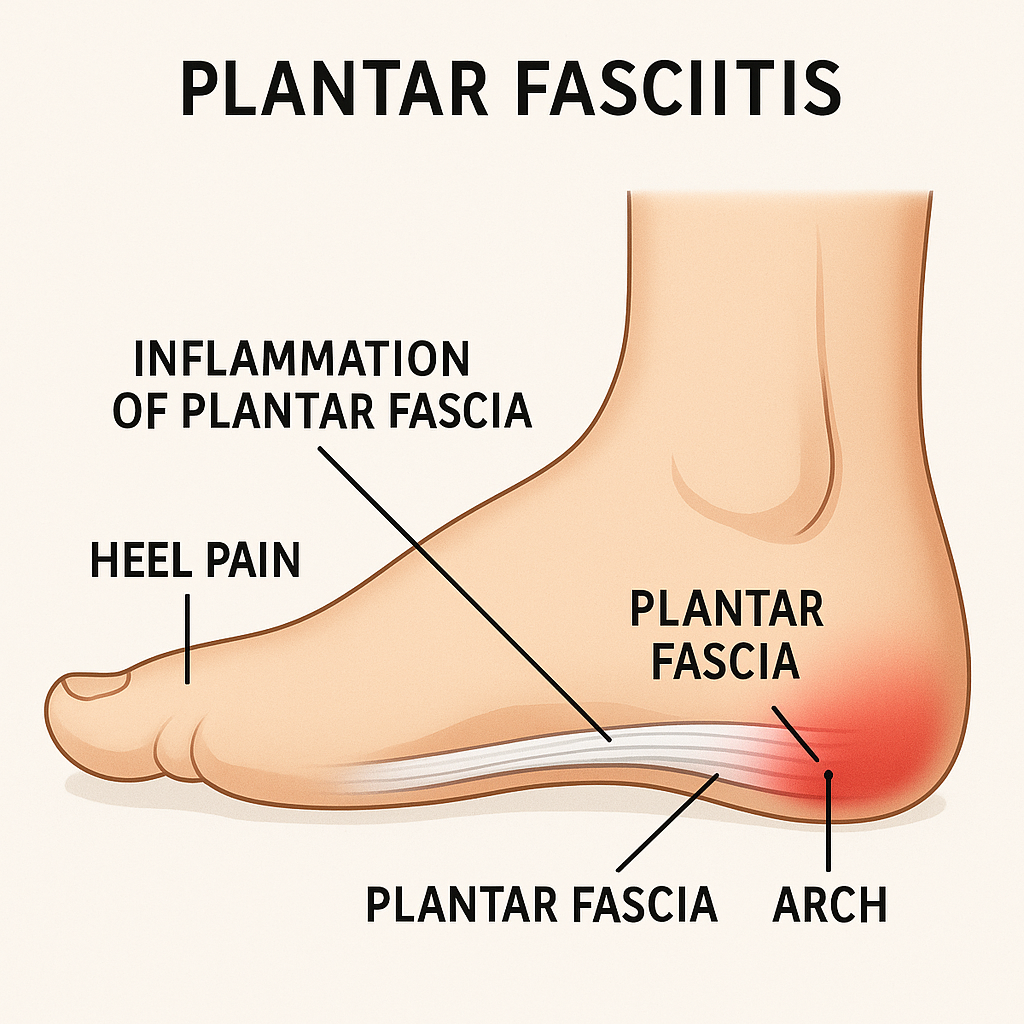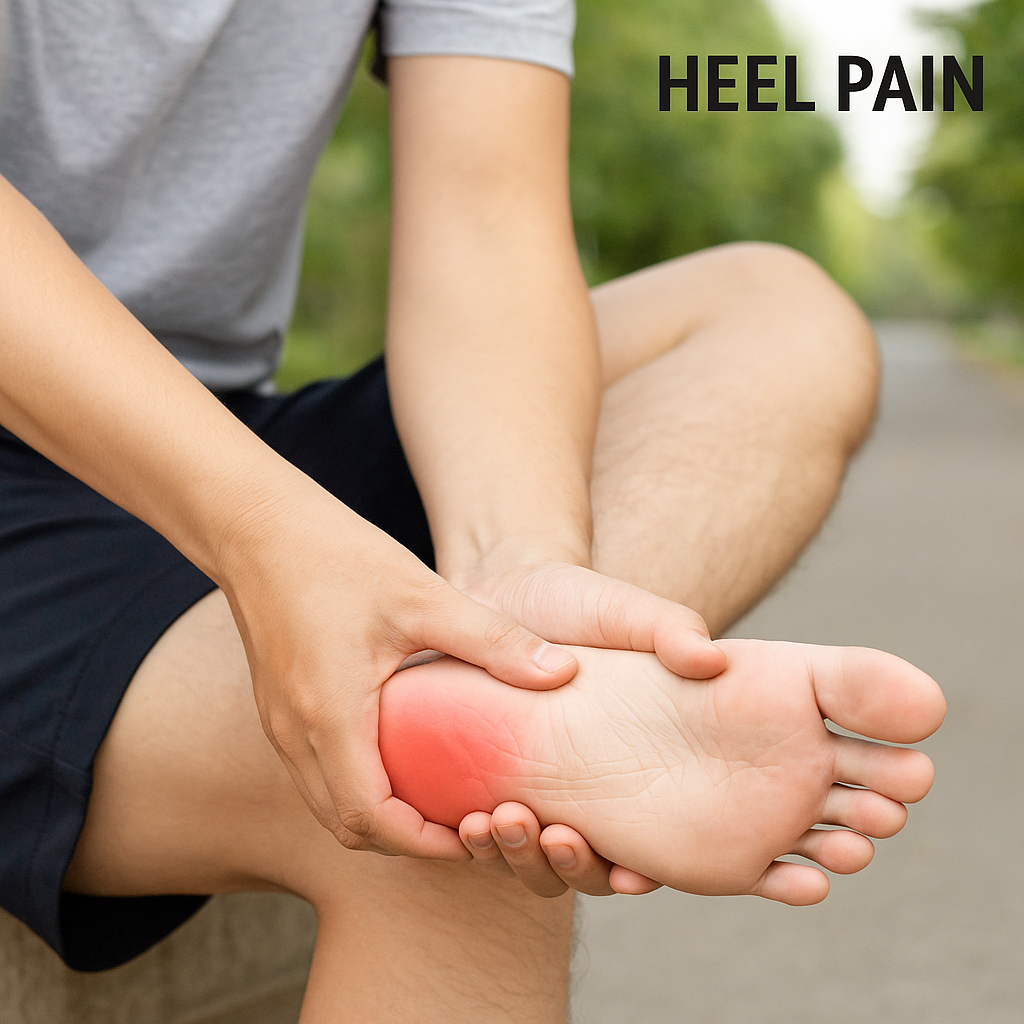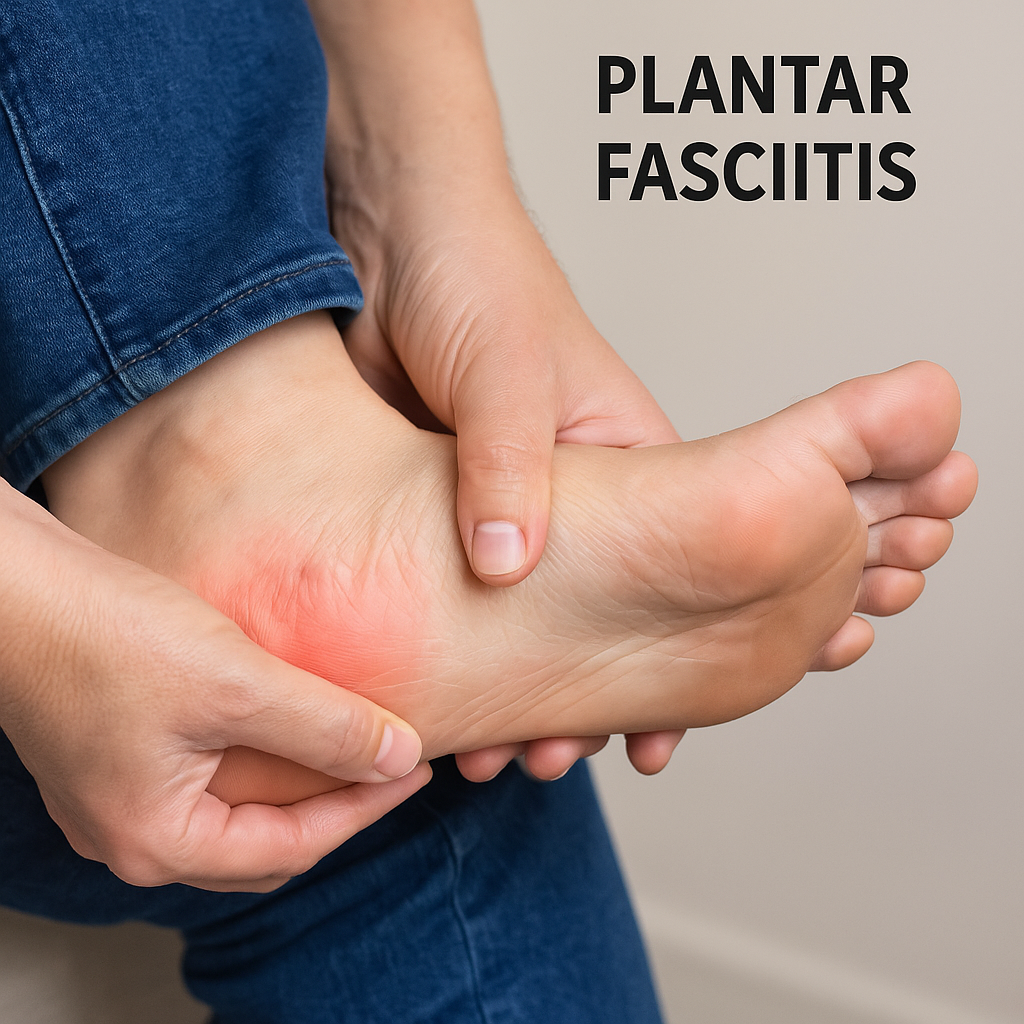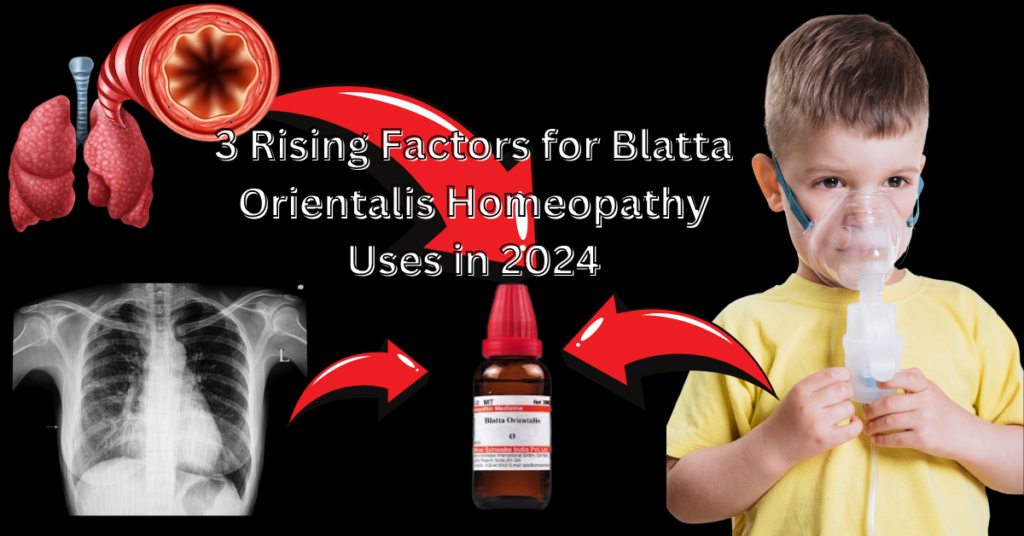Homeopathic medicine for plantar fasciitis is an often-overlooked treatment option, as individuals very rarely consider homeopathy for this painful heel condition. Plantar fasciitis commonly affects people who stand on their feet for long periods, causing persistent heel pain that disrupts daily activities and overall quality of life. While modern therapies such as physical treatment, non-steroidal anti-inflammatory drugs, and orthotics may provide relief, they are not effective for everyone and can sometimes lead to complications. Unlike these approaches, homeopathy offers a gentle, holistic solution that aims to treat the root cause and support long-term recovery.
In this comprehensive guide, we’ll look at how homeopathic medicine for plantar fasciitis works, explore day-to-day remedies, clarify how therapy works, and offer realistic advice to promote recovery. This article is your best bet whether you want to add to prescription panacea or take the all-natural direction.
Understanding Plantar Fasciitis in Depth
What Is The Plantar Fascia?
This thick, fibrous tissue is known as the plantar fascia, and it connects your heel bone to your toes. It not only supports the arch, but also absorbs shock. Overstress can produce small rips in the fascia, causing pain and inflammation, especially in the heel.

Detailed Symptoms
- Morning Pain: The most recognizable symptom is throbbing heel pain when you first get out of bed.
- Pain after inactivity: It may subside with activity but reappears after extended periods of standing or sitting.
- Localized Tenderness: Usually felt while touching the bottom of the heel.
- Achilles tendon tightness: This can aggravate symptoms and is regular with the illness.
What causes Plantar Fasciitis?
Plantar fasciitis is typically a result of uninterrupted overwork. Common causes include:
Wearing shoes that lack enough arch support or cushioning.
Flat feet or high arches: Abnormal foot propulsive tension in the plantar fascia.
Weight Gain: Excess body weight sets further pressure on the feet.
Occupation: Jobs that require a long duration of standing or walking on irregular surfaces.
Mostly, 40-60 aged adults are affected by this condition.
What is homeopathy, and how does it work?
Homeopathic Philosophy
Dr. Samuel F Hahnemann invented homeopathy in the 18th century, and it is based on the fundamental idea of “like cures like.” The notion is that a medicine that causes symptoms in a healthy person causes the same symptoms in a sick person after being greatly diluted.
Holistic Healing
Rather than targeting a single symptom, homeopathy addresses the whole individual’s physical, emotional, and mental aspects. Each treatment is tailored, not just to the disease, but to the person’s unique response to it.
Remedy Preparation
Homeopathic remedies are prepared from plant, animal, or mineral sources. They are diluted and potentized to remove toxicity while retaining the “energetic imprint” of the substance. The remedies are often administered as tiny sweet pellets or liquid drops under the tongue.
Why consider Homeopathic Medicine for Plantar Fasciitis?
Free of drugs and non-intrusive: Natural chemicals are used in homeopathy, thus there are no chemical side effects or chances of medication dependence.
- Personalized Treatment: Treatments are tailored to your unique symptoms and personality, not just the diagnosis.
- Safe Long-Term Use: It works well for long-term ailments and can be taken in addition to traditional therapies.
- Stimulates Natural Healing: Rather than suppressing symptoms, these therapies activate the body’s healing capabilities.
- Gentle and Suitable for All Ages: Children, the elderly, and pregnant women are all safe.

Best Homeopathic Doctor For Plantar Fasciitis: Click Here
Top 10 Homeopathic Medicine for Plantar Fasciitis:
1. Rhus Toxicodendron
Keynotes:
Pain and stiffness improve with motion
Pain is worse on initial movement (morning or after sitting)
Often needed in cases involving overexertion or strain
Modalities:
Worse: Rest, first movement, cold and damp weather, at night
Better: Continued motion, warm applications, hot bath
Associated Symptoms:
Stiffness and tearing pain in tendons and ligaments
Restlessness, need to keep moving legs and feet
Emotional/Mental State:
Anxious, restless, irritable
Difficulty settling, especially at night
Also Used For: Arthritis, sprains, tendonitis, back pain, and sciatica
2. Arnica Montana
Keynotes:
Bruised, sore sensation as if beaten
Useful for plantar fasciitis due to trauma, overuse, or long-standing injury
Modalities:
Worse: Touch, motion, cold, after exertion
Better: Rest, lying down with your head low
Associated Symptoms:
Discoloration or inflammation at the heel
Fear of being touched or approached due to pain
Emotional/Mental State:
“I’m okay” attitude despite obvious pain
Fear of being injured again
Also Used For: Post-surgical healing, trauma, bruises, muscle fatigue, and concussions
3. Ruta Graveolens
Keynotes:
Deep, aching pain in tendons and ligaments
Good for overuse injuries and heel pain with a feeling of “wear and tear”
Modalities:
Worse: Cold, damp weather, exertion, lying down
Better: Motion, warmth, pressure
Associated Symptoms:
Cramping in the soles of the feet
Numbness or weakness in the foot
Emotional/Mental State:
Irritable, gloomy
Worries excessively about health or injuries
Also Used For: Carpal tunnel, eye strain, tendonitis, sprains, repetitive strain injuries
4. Ledum Palustre
Keynotes:
Pain is better with cold applications
Heel feels swollen, sore, or inflamed
Modalities:
Worse: Warmth, covering the feet, nighttime
Better: Cold compresses, cold bathing
Associated Symptoms:
Purple discoloration of the heel
Insect bites or puncture wounds history
Emotional/Mental State:
Distant, reserved
Feels better when left alone
Also Used For: Joint pain, gout, puncture wounds, and mosquito bites

5. Calcarea Fluorica
Keynotes:
Heel pain from bone spurs or chronic inflammation
Tissue hardening and calcification
Modalities:
Worse: Beginning of movement, damp weather
Better: Continued movement, heat
Associated Symptoms:
Cracking or hard knots in ligaments
Stiffness on rising
Emotional/Mental State:
Practical, dependable personality
Worry over financial or structural security
Also Used For: Varicose veins, joint stiffness, uterine fibroids, and dental enamel issues
6. Pulsatilla Nigricans
Keynotes:
Pain that changes location and character
Worse from heat, better in fresh air
Modalities:
Worse: Warm rooms, after eating rich food, emotional upset
Better: Open air, gentle motion, sympathy
Associated Symptoms:
Weakness in the arches or a collapsing foot
Pain with a “wandering” nature
Emotional/Mental State:
Gentle, tearful, seeks comfort and attention
Changeable moods
Also Used For: Hormonal imbalances, colds with yellow mucus, and indigestion
7. Bryonia Alba
Keynotes:
Sharp pain that worsens with motion
The patient wants to stay completely still
Modalities:
Worse: Motion, heat, touch, morning
Better: Rest, pressure, cool applications
Associated Symptoms:
Swelling or redness may be present
Dryness of mouth and thirst for large quantities of water
Emotional/Mental State:
Irritable, prefers solitude
Anxiety about business or finances
Also Used For: Joint inflammation, dry coughs, headaches, and constipation
8. Silicea Terra
Keynotes:
Weakness and fatigue in the feet
Cold, clammy, and sweaty feet with heel pain
Modalities:
Worse: Cold weather, uncovering the feet
Better: Warmth, wrapping up, rest
Associated Symptoms:
Cracked heels, formation of abscesses
Chronic pain with a slow healing tendency
Emotional/Mental State:
Shy, introverted, overly sensitive to criticism
Lacks confidence but is determined once committed
Also Used For: Abscesses, brittle nails, bone diseases, and chronic infections
9. Calcarea Carbonica
Keynotes:
Heel pain in overweight or sluggish individuals
Weakness in muscles and ligaments
Modalities:
Worse: Climbing stairs, exertion, cold, damp weather
Better: Rest, dry climate, warmth
Associated Symptoms:
Excessive foot sweating
Cold, clammy feet; swelling in ankles
Emotional/Mental State:
Overwhelmed easily, anxious about health and security
Hardworking but cautious
Also Used For: Bone development issues, hypothyroidism, and menstrual disorders
10. Hypericum Perforatum
Keynotes:
Nerve pain, shooting or tingling sensations in the heel
Ideal for nerve-rich areas or post-injury
Modalities:
Worse: Cold, touch, jarring, pressure
Better: Warmth, lying still
Associated Symptoms:
Electric-like pain extending from the heel to the toes
History of nerve trauma, injury, or surgery
Emotional/Mental State:
Fearful, anxious, especially after injury
Sensitive to pain
Also Used For: Nerve injuries, concussions, tailbone pain, crushed fingers/toes
How to Take Homeopathic Medicine for Plantar Fasciitis
Dosage Guidelines
Potency: Start with 6C or 30C. For chronic cases, 200C may be prescribed by a professional.
Frequency: Acute pain may need several doses a day. Chronic conditions may require once-daily or alternate-day dosing.
How to Take: Place pellets under the tongue. Avoid food and drink for 15 minutes before and after.
Important Considerations
Don’t touch pellets directly; use the cap to pour them into your mouth.
Avoid strong-smelling substances like coffee or menthol during treatment.
Consult a licensed homeopath for complex or persistent symptoms.
Best Homeopathic Doctor For Plantar Fasciitis: Click Here
Complementary Lifestyle Changes to Enhance Healing
- Stretching Exercises
Stretch the calf muscles, Achilles tendon, and plantar fascia daily.
Morning stretches before stepping out of bed can reduce first-step pain. - Footwear Choices
Use shoes with arch support, heel cushioning, and a firm sole.
Avoid barefoot walking on hard surfaces. - Orthotic Inserts
Custom insoles support the foot arch and reduce pressure on the heel.
Over-the-counter gel heel cups can provide temporary relief. - Icing and Massage
Apply an ice pack to the heel for 15–20 minutes after standing or walking.
Use a tennis ball or frozen water bottle to massage the arch of your foot. - Rest and Recovery
Minimize high-impact activities like jogging.
Opt for swimming, biking, or low-impact exercises instead.
How Long Does Homeopathic Treatment Take to Work?
Short-Term Relief
In acute cases, homeopathic medicine for plantar fasciitis may begin working within a few days, especially when symptoms are matched to a remedy.
Chronic Cases
For people dealing with plantar fasciitis for months or years, improvement may take several weeks to a few months. Regular monitoring and remedy adjustments can lead to lasting relief.
When to Seek Medical Help
Homeopathy is generally safe, but in some cases, medical evaluation is necessary:
- Severe, disabling pain that limits walking or daily activity
- Swelling, redness, or warmth in the heel area
- No improvement after several weeks of treatment
- People with underlying conditions like diabetes or neuropathy
Combining homeopathic care with medical diagnosis often leads to the best outcomes.
Best Homeopathic Doctor For Plantar Fasciitis: Click Here
Conclusion: A Gentle Yet Effective Alternative
A safe, all-natural, and customized Homeopathic medicine for plantar fasciitis will give the best results. Rhus Tox, Arnica, and Calcarea Fluorica are just a few of the treatments that can help reduce inflammation, calm pain, and restore mobility without the negative side effects of typical medicines, regardless of how long the problem has existed or how recently it began.
By curing both the physical and emotional elements of pain, homeopathic remedies promote complete healing. Homeopathy can be a productive ally on your way to healing health when accompanied by self-care, appropriate footwear, and stretching.

